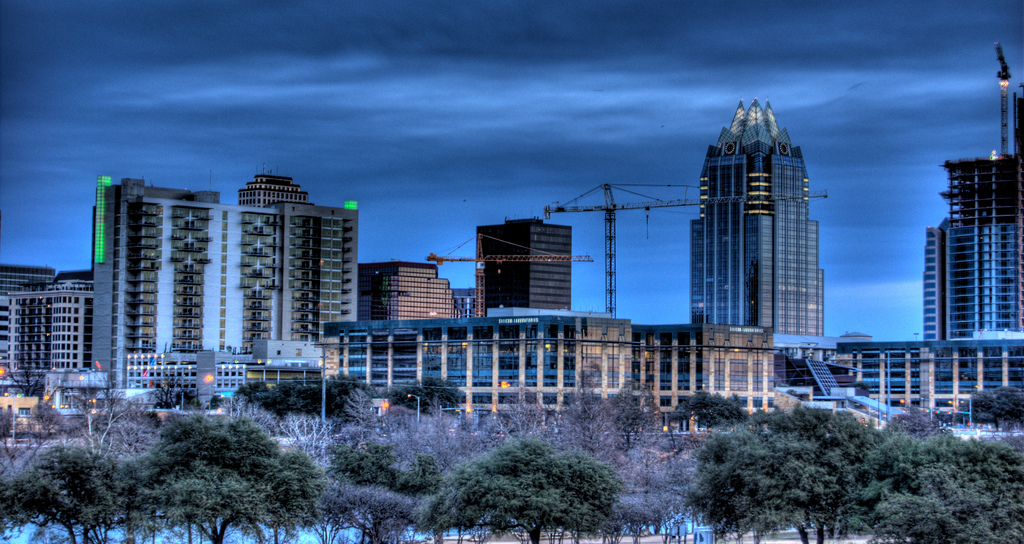How did Austin become one of America’s fastest-growing cities? In one word: Affordability.
You see, as late as the 1970s, Austin was still a small city. The capitol is here as well as the University of Texas, which gave it a large student and youth population. You also had Motorola, IBM, and several defense contractors in town. But throughout the 1980s and 1990s, Austin experienced a cycle of population booms and busts.
It wasn’t until the early 2000s that the tech industry reached a critical mass and the low cost of living further accelerated that boom. People came here for the laid-back lifestyle, warm weather, cheap housing, and liberal politics. Of course, by 2015 housing costs have become not so reasonable, and the traffic is getting more congested, so it’s unclear whether Austin can remain the country’s top-growing large city. But we’re certainly trying.
So, what do we have going for us in attracting so much outside talent? Let’s break it down.
Austin is the center of government in Texas

Photo: Flickr/Trey Ratcliffe
Austin’s first big draw is its rough geographically-centered location in the state, which led to it being declared the capital city of Texas shortly after the new republic’s secession from Mexico. If your job is politically oriented at the regional or state level, you likely spend a lot of time here.
We’ve got the Tech businesses

Jason Seats addresses the Austin TechStars Demo Day 2015 audience. Photo: Stephen C. Webster.
Dell Computer Corporation transformed the sleepy community of Round Rock, just north of Austin, into a bustling uptown as the growing Austin metro area has continued to expand northward along I-35 into Georgetown and Pflugerville. This concentration of major tech companies made Austin a natural Mecca for techies in the 1990s; one of the biggest tech-industry conferences in the world is part of Austin’s annual “South By Southwest” festival, originally a music fair that’s also gained food, film, and IT spin-offs. Oh, and don’t forget the incubators like Techstars or Capital Factory. Their influence on local tech startups cannot be understated.
The University of Texas

Photo: Flickr user Kari Sullivan, creative commons licensed.
Texas has three primary public university systems; UT, Texas A&M, and Texas Tech. While the home cities of the other two universities (College Station for A&M and Lubbock for Tech) remain fairly small “college towns”, the importance of Austin in political business has led to increased recognition of the University, which has led to various businesses recruiting there and ultimately setting up offices in the metro to attract UT grads.
Liberal politics

Protesters gather outside the Senate Gallery minutes before midnight to stall Senate Bill 5, a bill that would put strict regulations on abortion facilities, from going to a vote at the Texas State Capitol. Photo by Lauren Gerson.
Most Americans consider Texas to be one of the reddest states in the nation. However, due to a multitude of factors including the presence of a university (typically a center of liberal thought) and the influx of left-leaning tech workers from the two coasts, the “People’s Democratic Republic of Austin” (as decried by the rest of the state) forms a decidedly blue center of an otherwise ruby-red state. Or as Rick Perry once said, we’re the blueberry in the tomato soup that is Texas.
college Sports

Photo: Flickr creative commons.
While the Austin metro doesn’t host any major-league sports team, the University of Texas provides powerhouse football and basketball teams that most Austinites consider to be their “home teams” for those sports.
The Hill country

Photo: Flickr user ManoRegejimas, creative commons licensed.
To the west of US 183 and MoPac Expressway, towards the north of the metro area, lies a series of rolling hills formed in prehistory by the Balcones Fault. This section of west Austin features some truly spectacular home sites that you’d pay tens of millions of dollars for in California, but can be had here for a fraction of the price. Lots of tech CEOs and other one-percenters have homes in the Austin area, and you’ll also find a lot of business campuses nestled in the hills.
The texas cost of living

Photo: Flickr user Tax Credits, creative commons licensed.
Compared to New York or California, the total tax burden on a resident or business in Texas lowers the cost of living by up to 10%. Housing costs on average in the state are also very low, whereas California’s median home price statewide is around $400,000, and median prices in the NYC area are similar. And for Texas? About $177,000 statewide. Even though Austin is the most expensive city in Texas, with homes averaging around $280k, that’s still about half the price of the LA metro area, and a third the price of Silicon Valley. To top that off, in Austin you’re usually going to get a bigger house for your dollar than in the other tech hubs.








